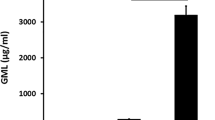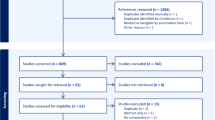Abstract
OBJECTIVES: To evaluate the effects of powdered fortifiers and the addition of iron and medium-chain triglycerides on preterm human milk antibacterial activity.
STUDY DESIGN: Human milk samples were obtained from 42 preterm lactating mothers after the first week of postnatal life. Enfamil® (EHMF) and Similac® (SHMF) Human Milk Fortifiers were evaluated. All mothers were healthy and were on no medications except for vitamins during lactation. The effects of each fortifier against E. coli (E. coli), Staphylococcus (Staph), Enterobacter sakazakii (ES), and Group B Streptococcus (GBS) were measured by the filter paper method and growth of the bacteria with human milk alone as control. The addition of iron and medium-chain triglycerides (MCT) to human milk was also tested.
RESULTS: Human milk inhibited the growth of E. coli, Staph, ES, and GBS. Only the SHMF and the addition of MCT had similar antibacterial action as human milk alone. EHMF and the addition of iron to human milk removed the milk's antibacterial action against these four organisms.
CONCLUSIONS: Preterm human milk has antimicrobial activity against E. coli, Staph, ES, and GBS. This activity can be affected by the addition of iron and fortifiers that contain iron.
This is a preview of subscription content, access via your institution
Access options
Subscribe to this journal
Receive 12 print issues and online access
$259.00 per year
only $21.58 per issue
Buy this article
- Purchase on Springer Link
- Instant access to full article PDF
Prices may be subject to local taxes which are calculated during checkout
Similar content being viewed by others
References
Lawrence RA . Breastfeeding. St. Louis: Mosby; 1994, p. 421–424.
Isaacs CE, Litov RE, Thormar H . Antimicrobial activity of lipids added to human milk, infant formula, and bovine milk. J Nutr Biochem 1995;6(7):362–366.
Griffiths E, Humphreys J . Bacteriostatic effect of human milk and bovine colostrum on Escherichia coli: importance of bicarbonate. Infect Immun 1977;15(2):396–401.
Tortora GJ, Funke BR, Case CL . Microbiology An Introduction. Redwood City: Benjamin/Case; 1995.
Hernandez J, Lemons P, Lemons J, Todd J . Effect of storage processes on the bacterial growth-inhibiting activity of human breast milk. Pediatrics 1979;63(4):597–601.
Centers for Disease Control and Prevention. Enterobacter sakazakii infections associated with the use of powdered infant formula — Tennessee 2001. JAMA 2002;287(17): 2204–2205.
Chan GM . Lactation The Breast-Feeding Manual for Health Professionals. Chicago: Precept Press; 1997.
Cunningham AS, Jelliffe DB, Jelliffe EF . Breast-feeding and health in the 1980s: a global epidemiologic review. J Pediatr 1991;118(5):659–666.
McGuire W, Anthony MY . Donor human milk versus formula for preventing necrotizing enterocolitis in preterm infants: systematic review. Arch Dis Child Fetal Neonatal Ed 2003;88:11–14.
Hylander MA, Strobino DM, Dhanireddy R . Human milk feedings and infection among the very low birth weight infants. Pediatrics 1998; 102(3): E38.
Lucas A, Fewtrell MS, Morley R, et al. Randomized outcome trial of human milk fortification and developmental outcome in preterm infants. Am J Clin Nutr 1996;64(2):142–151.
Jocson MA, Mason EO, Schanler RJ . The effects of nutrient fortification and varying storage conditions on host defense properties of human milk. Pediatrics 1997;100(2 Part 1):240–243.
Quan R, Yang C, Rubinstein S, Lewiston NJ, Stevenson DK, Kerner Jr. JA . The effect of nutritional additives on anti-infective factors in human milk. Clin Pediatr (Phila) 1994;33(6):325–328.
Goldman AS, Garza C, Nichols BL, Johnson CA, Smith EO, Goldblum RM . Effects of prematurity upon the immunologic system in human milk. J Pediatr 1982; 101(6): 901–905.
Arnold RR, Cole MF, McGhee JR . A bactericidal effect for human lactoferrin. Science 1977;197(4300):263–265.
Bullen JJ . Iron-binding proteins and other factors in milk responsible for resistance to Escherichia coli. Ciba Found Sympos 1976;42(42):149–169.
Bullen JJ, Rogers HJ, Griffiths E . Role of iron in bacterial infection. Curr Top Microbiol Immunol 1978;80:1–35.
Reiter B, Perraudin JP . The antibacterial activity of lactoferrin and neonatal E. coli infections. A selective and critical review. Adv Exp Med Biol 1998;443:175–178.
Andersson Y, Lindquist S, Lagerqvist C, Hernell O . Lactoferrin is responsible for the fungistatic effect of human milk. Early Hum Dev 2000;59(2):95–105.
Conneely OM . Antiinflammatory activities of lactoferrin. J Am Coll Nutr 2001;20(5 Suppl):389S–395S.
Arnold RR, Russell JE, Champion WJ, Gauthier JJ . Bactericidal activity of human lactoferrin: influence of physical condition and metabolic state of the target microorganism. Infect Immun 1981;32(2):655–660.
Yamauchi K, Tomita M, Giehl TJ, Ellison RT . Antibacterial activity of lactoferrin and a pepsin-derived lactoferrin peptide fragment. Infect Immun 1993;61(2):719–728.
Singer PC, Stumm W . Acid mine drainage — the rate limiting step. Science 1970;167:1121–1123.
Cotton FA, Wilkinson G . Advanced Inorganic Chemistry A Comprehensive Text. 4th ed. New York: John Wiley and Sons; 1980.
Nagasako Y, Saito H, Tamura Y, Shimamura S, Tomita M . Iron-binding properties of bovine lactoferrin in iron-rich solution. J Dairy Sci 1993;76(7):1876–1881.
Narayanan I, Prakash K, Murthy NS, Gujral VV . Randomised controlled trial of effect of raw and holder pasteurised human milk and of formula supplements on incidence of neonatal infection. Lancet 1984;2(8412):1111–1113.
Narayanan I, Prakash K, Gujral V V . The value of human milk in the prevention of infection in the high-risk low-birth-weight infant. J Pediatr 1981;99(3):496–498.
Schanler RJ . Suitability of human milk for the low-birthweight infant. Clin Perinatol 1995;22(1):207–222.
Acknowledgements
The author wants to thank Gurmail Gill for her technical assistance and Drs. Ross Milley and Roger Faix for their insightful comments on this manuscript. Financial support for this study was independent of any pharmaceutical or formula company.
Author information
Authors and Affiliations
Rights and permissions
About this article
Cite this article
Chan, G. Effects of Powdered Human Milk Fortifiers on the Antibacterial Actions of Human Milk. J Perinatol 23, 620–623 (2003). https://doi.org/10.1038/sj.jp.7211003
Published:
Issue Date:
DOI: https://doi.org/10.1038/sj.jp.7211003
This article is cited by
-
Analysis of Human Milk Composition After Preterm Delivery With and Without Fortification
Maternal and Child Health Journal (2015)
-
Human milk and the premature infant
Journal of Perinatology (2007)
-
Effects of human milk fortifier on the antimicrobial properties of human milk
Journal of Perinatology (2006)
-
Effect of Human Milk Fortifiers on Bacterial Growth in Human Milk
Journal of Perinatology (2005)



